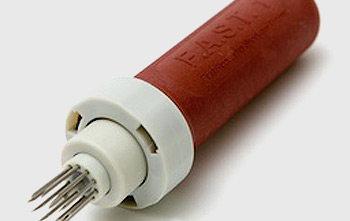
Understanding Intraosseous Access Devices and Intraosseous Infusions
In emergency and critical care settings, rapid and reliable vascular access can mean the difference between life and death. When traditional intravenous (IV) access proves challenging or impossible, intraosseous (IO) access offers an essential alternative for fluid and medication administration. This blog post explores the fundamentals of intraosseous access devices and intraosseous infusions, highlighting their role, indications, and clinical importance.
What Are Intraosseous Access Devices?
Intraosseous access devices are specialized tools designed to provide direct entry into the bone marrow cavity. This route enables the administration of fluids, medications, and blood products when peripheral or central IV access cannot be established quickly. The bone marrow’s rich vascular network allows substances to enter the systemic circulation rapidly, making IO access a vital option during resuscitation or critical emergencies.
Commonly used sites for IO insertion include the proximal tibia, distal femur, proximal humerus, and sternum, depending on patient age and clinical situation. The procedure is often performed using manual or powered devices specifically engineered to penetrate the cortical bone safely.
Indications and Benefits of Intraosseous Infusions
Intraosseous infusions are primarily indicated in emergency situations such as cardiac arrest, shock, trauma, or severe dehydration where immediate vascular access is necessary but difficult to obtain through peripheral veins. The key benefits include:
- Rapid Access: IO access can be established within seconds, significantly reducing delays in critical interventions.
- High Success Rate: Compared to difficult peripheral IV attempts, IO insertion has a higher first-attempt success rate in emergency scenarios.
- Versatility: Allows administration of almost all medications and fluids that can be given intravenously.
- Minimal Complications: When performed correctly, IO access is safe, with complications such as infection or compartment syndrome being rare.
Challenges and Considerations
While intraosseous access is lifesaving, it requires proper training to avoid complications. Incorrect insertion can lead to extravasation, bone fractures, or damage to growth plates in pediatric patients. Furthermore, IO access is considered a temporary measure, with definitive venous access established as soon as feasible.
Enhance Your Knowledge with the Pedagogy Intraosseous Access Devices Course
For healthcare professionals seeking to deepen their understanding of intraosseous access, Pedagogy Education offers a comprehensive online continuing education course titled Intraosseous Access Devices. This course thoroughly covers:
- The anatomy relevant to IO access sites
- Indications and contraindications for IO insertion
- Step-by-step procedural guidance
- Device types and their specific uses
- Potential complications and how to manage them
- Case studies highlighting practical application
Why Take This Course Online?
The online format provides several advantages for busy clinicians:
- Flexibility: Learn at your own pace, anytime and anywhere, fitting education into your schedule.
- Interactive Content: Engaging modules with visuals and quizzes help reinforce learning.
- Updated Information: The course content reflects current best practices and guidelines.
- Certificate of Completion: Certificate of Completion instantly available upon passing exam with an 80% or above. Earn continuing education contact hours to meet licensure requirements and boost professional credentials.
Investing time in this course ensures you are prepared to use intraosseous access devices confidently and competently, ultimately improving patient outcomes in critical care situations.
Explore the Intraosseous Access Devices course and enroll today at Pedagogy Education: https://pedagogyeducation.com/Courses/Intraosseous-Access-Devices
References
- Kleinman ME, Brennan EE, Goldberger ZD, et al. Part 5: Adult Basic Life Support and Cardiopulmonary Resuscitation Quality: 2015 American Heart Association Guidelines Update for Cardiopulmonary Resuscitation and Emergency Cardiovascular Care. Circulation. 2015;132(18_suppl_2):S414-S435.
- Horton MA, Pons PT. Intraosseous access: review of techniques and clinical indications. J Emerg Med. 2008;35(4):389-399.
- Neumar RW, Otto CW, Link MS, et al. Part 8: Adult Advanced Cardiovascular Life Support: 2010 American Heart Association Guidelines for Cardiopulmonary Resuscitation and Emergency Cardiovascular Care. Circulation. 2010;122(18 Suppl 3):S729-S767.

